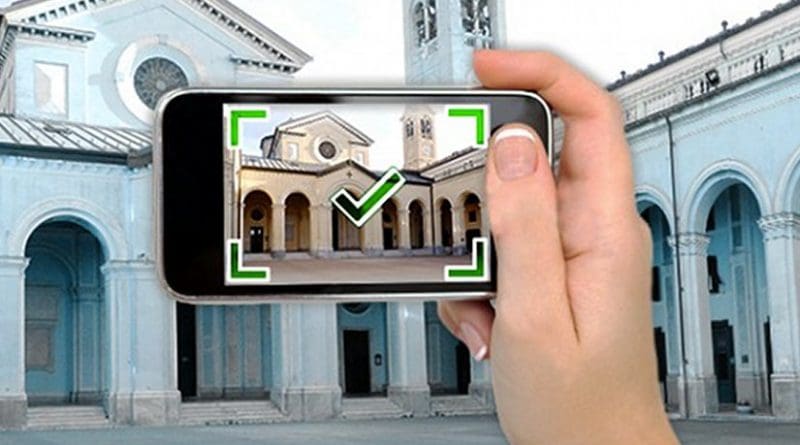From Photos To Realistic Video Games In The Blink Of An Eye
Companies willing to stand out in today’s video game industry need three core assets: an original concept and scenario, an intuitive gameplay, and photo-realistic game environments. As vibrant as it may be, the European video game industry is caught up in this race, and small companies can hardly win without tremendous budgets being invested into their 3D environments. Technology developed under the CR-PLAY project — which enables the creation of realistic gaming environments based on photos and videos — may increase their chances.
The CR-PLAY (Capture-Reconstruct-Play – An innovative mixed pipeline for videogames development) technology enables developers to turn houses, buildings, trees, cars and any other real life object into realistic 3D graphics based only on photos and videos. It is able to reconstruct any existing environment, saving considerable development time and cost in the process.
To make this possible, the project consortium relied on two existing techniques: image-based modelling and rendering (IBR) and video based modelling and rendering (VBR). They developed user-friendly capture devices based on low-cost components, overcame existing problems with IBR and VBR algorithms (low quality of distant objects, modification of light conditions and absence of treatment of dynamic conditions such as elements moving with the wind or flames) and are now preparing for exploitation by the European game development community.
Dr Ivan Orvieto, coordinator of the project, expands on the results of the project and his hopes for an adoption by game developers across Europe within the next year and a half.
How important is the role played by ever more realistic engines in the increased production cost of video games?
The increase of costs in game development is caused by several factors and is strongly affecting the European game industry. Creating a realistic look and feel is certainly one of the most expensive tasks nowadays. This is due to the effort spent in creating assets such as buildings, cars, forests, etc., but also for the development of engines for physics, weather phenomena, crowd simulations, artificial intelligence, etc.
How does CR-PLAY contribute to reducing this cost? What kind of technologies does it resort to?
CR-PLAY is an innovative technology aimed at radically changing the way environments and assets for video games are created.
Backgrounds and objects can be captured by simply taking a few pictures and short videos of a building or area. These images are then processed by a semi-automatic software which reproduces high-quality scenes within the game engine Unity3D. The obtained photo-realistic assets can be combined with traditional textures and polygons used in the standard process of videogames creation.
The backbone of this new approach are the innovative technologies of Image-Based Rendering (IBR) and Video-Based Rendering (VBR).
What type of market players and gaming platforms do you target?
CR-PLAY Technology is currently integrated within Unity3D, allowing game developers to deploy their games on mobile and Windows-desktop platforms. Depending on developers’ preferences, CR-PLAY Technology can also be integrated with other game engines such as the Unreal Engine.
Can this technology be used for creating past or non-existing environments as well?
The CR-PLAY Technology can be used for projects where past-present comparison is required, as it allows 3D artists to integrate traditional assets. Nevertheless, to make the most of the simplicity and cost-effectiveness of the core technology, it is suggested to represent existing environments and objects in games created with CR-PLAY.
When can we expect to see the first commercially-available games using your technology?
Since CR-PLAY is an RTD project, its outcomes are intended to be at prototypical stage. Nevertheless, given the strong results obtained so far, the adoption of our technology in commercial projects is not going to be too far in the future.
Further engineering activities will essentially revolve around optimisations in space required on device and performances. Thus, from a technological point of view, we can expect an 18-month window from the end of the project to a potential release of the technology to game developers.
How do you see your technology performing in the game industry in a few years from now?
This is very difficult to answer, as the game industry changes at lightning speed.
The main aim of CR-PLAY is to put cost-effective and high-quality technology in the hands of small game development studios in order to help them overcome the budget difficulties they face every day. Once the engineering activities are completed, there is a real potential to see CR-PLAY technology adopted not only in game production but wherever it is required to reproduce photo-realistic environments for affordable budgets, such as in real-estate, tourism and cultural heritage markets.
Source: CORDIS

